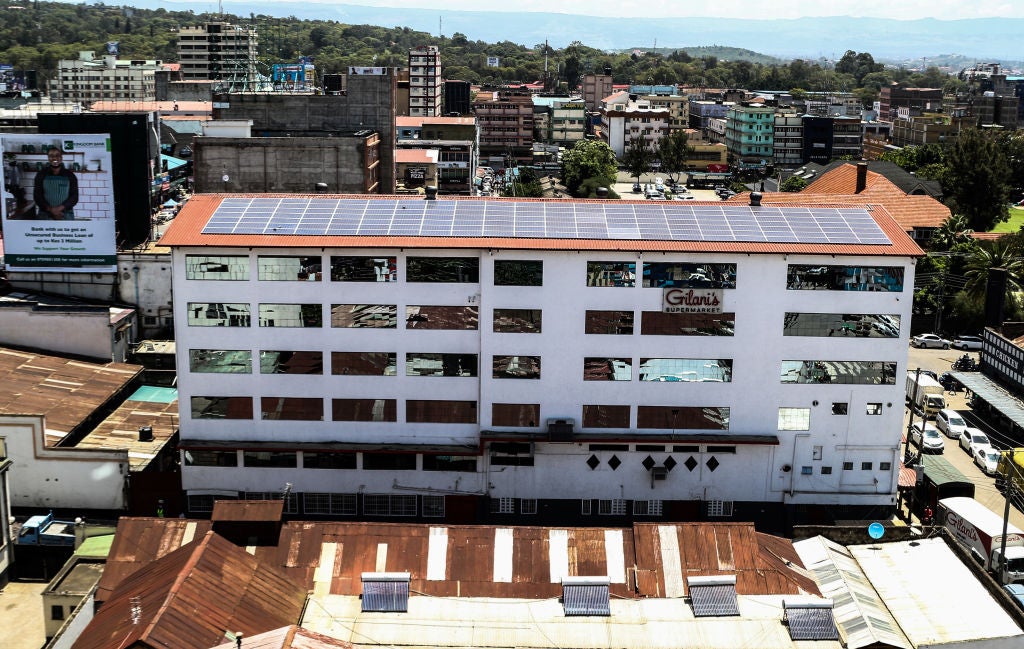Earlier this month in Washington, DC, donor and recipient countries, financiers and advocates convened at the World Bank Spring Meetings. A key priority of this gathering was to reform and scale up the bank’s financing of the clean energy transition across developing countries in the Global South.
The energy transition offers the best opportunity for more than 70 developing countries – namely in Africa, Latin America, small island developing states (SIDS) and South East Asia – to advance their economies and improve life expectancy, education and per capita income in ways that fossil fuels have failed to deliver. Global South countries have far more potential from renewable energy than fossil fuels – energy sources which are dominated by Global North countries and companies.
The Global South’s clean energy potential
For regions across the Global South already facing growth challenges, the spread of fires, floods, hurricanes and other natural disasters exacerbated by climate change, plus anaemic post-pandemic global growth, only sharpens the case for clean energy investment.
If developing countries are to unlock a commercially driven energy transition at scale, it is time for big banks and global financial institutions such as the World Bank to invest in renewables in these countries so they can gain access to affordable and secure energy rapidly and at a large scale.
Take Africa, a continent that produces only 6% of global fossil fuels from 4% of global reserves but has access to 39% of global renewable potential. Similar clean energy potential exists at varying degrees throughout the Global South – Latin America, South East Asia and SIDS – where 80% of people live in fossil fuel-importing countries. Renewable power is faster to install, requires less maintenance and – when paired with energy storage – can provide reliable, 24-hour power.
According to research company BloombergNEF, renewables are the cheapest source of new electricity generation in 90% of the world. Why provide precious capital to petrostates and international fossil fuel corporations when you can opt for low-cost local power supporting local jobs?
Supporters of renewable energy for developing countries often highlight the challenges of funding. Historically, competing calls on limited flows of development finance have left clean energy projects in the Global South underfunded at best. As a result, there has been much talk about reforming large multilateral financing institutions such as the World Bank to make them fit for purpose to finance the Global South’s energy transition. Commercial financing consortiums such as GFANZ have also proliferated – lining up commercial banks eager to invest in renewables in Africa, Latin America and South East Asia.
However, as commercial banks contort to redirect their capital from lower-risk investments in the Global North to accept more inherent risk in the Global South, there is a critical barrier, one which not enough people or institutions are addressing: where are the projects?
Bankable projects
To finance an infrastructure project anywhere in the world, a project must go through various levels of due diligence to determine whether it is “bankable” – a term that refers to the necessary techno-economic, engineering and geotechnical inputs to a project, which must be of a high enough standard before it can be considered financeable.
In the context of the Global South, project assessment may also include an analysis of the regulatory environment, off-taker risk, governance structures and procurement practices, which tend to be less mature in developing countries. However, if the project is considered high quality, if it is determined to be bankable and if it offers high returns, these other considerations can be overlooked.
The reality is that there are very few bankable clean energy projects in the Global South. The few that are ready for financing have the advantage of securing low-cost financing from multilateral financing institutions or via global climate financing; however, these public funding flows have often displaced private capital, which is critical to scaling investment potential.
Creating Global South clean energy markets
This transition will not be easy for the Global South. It requires building the capacity of local utilities and local developers to both prepare and implement local projects. It also requires funding from countries in Europe, the US, Japan and the rest of the Global North to develop projects to make them bankable.
Current project development funding is scarce, hard to access and scattered. On average, it requires anywhere from 5% to 20% of the total capital investment in a project, depending on the complexity, to conduct the necessary studies to complete the inputs to make it bankable.
Global financial institutions, philanthropies and development agencies in wealthy nations must recognise that to unlock financing, they must also provide the necessary technical assistance and project development funding needed to build out bankable project portfolios.
Until then, finance will continue to be a hammer looking for a nail in Global South clean energy markets.






